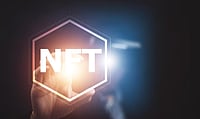As adoption of the crypto continues to grow, mainstream users are more and more reliant on their Web3 wallets, such as MetaMask, to interact with decentralized applications. But token approvals arguably remain the largest weak points in the user journey, as users sometimes grant approval to broad or harmful permissions through maneuvers like infinite approval. In the wake of this, modern wallets have introduced intelligent alerts and warnings that analyze each and every approval request prior to it being signed. These alerts look for malicious contracts, suspicious spending limits, scam tokens, and phishing-related transactions. Understanding these protections is part of a required foundation to safely navigate the decentralized ecosystem.
Introduction
Token approvals form the very basis on which Web3 features work. They allow various decentralized applications to spend your tokens for you, whether it be swapping assets, staking, minting NFTs, or providing liquidity. This convenience, however, comes at a certain degree of risk. Many of the largest DeFi exploits and wallet-draining scams rely not on breaking into wallets but merely trick users into approving malicious contracts.
Attackers have evolved over time, hosting phishing sites indistinguishable from real platforms, deploying malicious contracts that behave normally until some trigger is activated, and crafting interfaces that masquerade dangerous approval requests. Accordingly, top wallets including but not limited to MetaMask, Rabby, Coinbase Wallet, among others, have crafted comprehensive security systems which flag warnings before a user signs a transaction.
Below, this article will explain how these wallets detect risky token approvals, how alerts work, why they're important, and how users benefit from built-in security layers that are now becoming industry standard.
Understanding Token Approvals - And Where the Risks Come From
Approving tokens, in essence, gives smart contracts the green light to spend certain tokens in your wallet. The potential danger comes when:
The contract is malicious or unaudited
You are granting unlimited permissions inadvertently.
The logic of the contract allows for hidden or malicious behavior
A phishing website impersonates a real dApp
A once-safe contract is now vulnerable
Airdrop Scams Entice Approval of Bogus Tokens
The goal for attackers is simple:
Create an agreement which, when confirmed by the user, will drain his wallet.
Because approvals are signed on-chain, a single mistake can lead to irreversible fund loss.
How Modern Wallets Detect and Warn Users About Risky Token Approvals
Today's wallets integrate advanced detection technologies that combine real-time risk intelligence, AI-powered analysis, transaction simulation, and phishing protection. These features run quietly in the background, analyzing approval requests even before a user may realize something is not quite right.
1. Contract Risk Scoring and Behavioral Analysis
MetaMask and other wallets collaborate with security engines, like Blockaid, which scan smart contracts for the following:
Known malicious patterns
Suspicious opcode behavior
Unusual functions of the contract
Previous scam reports
Blacklisted developer addresses
Rapid redeployments are common in rug pulls.
If any red flags pop up, the wallet will set off an alert, such as:
"This contract has been identified as high risk.
Unlike older systems that relied on user intuition, today's wallets are capable of detecting dangerous approvals, even when the website looks legitimate.
2. Transaction Simulation: Predicting What Will Happen Before You Sign
One of the most important improvements in wallet security is pre-transaction simulation.
Before displaying a signature request, the wallet emulates:
What tokens will move
Who will receive them
Whether approval can trigger a drain
Whether hidden functions are activated
If the contract is masking malicious behavior
If the simulation predicts a loss of funds, then the wallet will show a high-severity warning.
This has saved thousands of users from unknowingly authorizing wallet-draining operations.
3. Anomaly Detection in Approval Amounts
A common danger in DeFi is that many dApps default to infinite approval so users don’t need to approve every transaction. It creates, however, a long-term vulnerability: if the dApp or contract is compromised later, attackers have full access to your tokens.
Modern wallets do explicitly warn users about this risk:
“You're giving unlimited access to your tokens.”
“This approval may expose your wallet to potential loss.”
Many wallets offer one-click options to switch from “Unlimited” to a custom spending cap, resulting in greatly reduced risk.
4. Phishing and Fake Website Detection
Crypto is mostly an attack vector for phishing websites.
Wallets now automatically scan:
Age of the website domain
SSL certificate validity
Phishing domain pattern knowledge
URL similarity to popular Web3 platforms
Reported phishing attempts
In case something is not OK, it will warn the user before wallet connection or approval of a transaction.
5. Reputation Systems for Contracts, Tokens, and dApps
Wallets compile wisdom from:
Rug pull databases
Malicious contracts blocklists
Scammer wallet activity
Community reports
Security firm databases
Low scores in the reputation of contracts and tokens raise cautionary alerts.
This prevents users from interacting with brand-new or suspicious DeFi farms, fake NFT collections, and cloned token contracts.
6. Social Engineering Pattern Detection
Some scams rely on behavioral manipulation rather than code-level exploits.
MetaMask and other wallets detect:
Fake token approvals from airdrop scams
Approvals followingfraudulent pop-ups
Sudden transitions from safe to dangerous sites
Regarding interactions different from a user's normal history
This form of detection based on behaviors prevents the user from falling into coordinated scam patterns.
Comparison: How Wallets Approach Risky Approvals
Feature / Wallet | MetaMask | Rabby Wallet | Coinbase Wallet |
Transaction Simulation | Yes | Very Strong Simulation | Yes |
Infinite Approval Warning | Yes | Yes | Partial |
Scam Contract Alerts | Yes | Yes | Yes |
URL/Phishing Detection | Advanced | Advanced | Moderate |
External Risk Engine | Blockaid Integrated | Custom + APIs | Internal |
How MetaMask Guides Users Through a Risky Approval Request (Step-by-Step)
Step 1: User clicks “Approve” on a dApp interface.
Step 2: MetaMask simulates the transaction silently.
Step 3: The contract is checked against scam lists and risk scores.
Step 4: Spending limits are examined (especially unlimited approvals).
Step 5: Phishing-level checks validate the source website.
Step 6: A risk notification is displayed:
Green: Safe
Yellow: Caution
Red: High-risk detected
Step 7: The user can adjust the approval amount or decline entirely.
This layered system creates multiple safeguards between users and attackers.
Where Users Still Make Mistakes (Despite Wallet Protections)
Even with advanced warnings, many users still:
Confirm blindly without reading prompts
Treat every approval as routine
Trust unknown dApps promising rewards
Fall for phishing URLs that look almost identical
Forget to revoke old approvals
Approve unlimited spending for convenience
Wallet alerts help significantly — but cannot replace user caution.
Best Practices for Safe Token Approvals
To stay safe:
Double-check website URLs
Prefer spending caps instead of unlimited approvals
Use revoke tools monthly (Revoke.cash, Etherscan, Debank)
Avoid connecting wallets to unknown Web3 projects
Treat every airdrop with suspicion unless verified
Always read wallet alerts carefully
Security in Web3 is a combination of technology + user awareness.
Conclusion
Web3 wallets have evolved far beyond simple crypto storage tools. They now serve as the first line of defense against scams that exploit token approvals—a method attackers use far more often than hacking private keys. Features like transaction simulation, contract risk scoring, phishing detection, and spending-limit warnings have transformed wallets into intelligent security systems that proactively protect users.
Modern wallets like MetaMask offer layered protection that helps detect hidden threats before fund loss occurs. Yet no security system is perfect. Users must combine wallet protections with good practices—verifying URLs, avoiding suspicious dApps, and managing approvals responsibly.
As the crypto ecosystem matures, the collaboration between smart wallet security and educated user behavior will play the most critical role in reducing losses and making Web3 safer for everyone.
People Also Ask (PAA)
Q1: What is a risky token approval?
A risky token approval is any on-chain permission that grants a smart contract inappropriate or excessive control over your tokens. This may occur through malicious code, infinite spending permissions, or fraudulent websites.
Q2: How does MetaMask know if a transaction is dangerous?
MetaMask uses tools like contract simulation, domain verification, historical scam data, AI-based risk engines, and token behavior analysis to detect harmful activity before signing.
Q3: What is infinite approval and why is it dangerous?
Infinite approval allows a contract to spend all of a token in your wallet without further permission. If the contract is later compromised, hackers can drain your balance instantly.
Q4: Can wallets stop all scams?
Wallets significantly reduce risk but cannot eliminate it entirely. Sophisticated phishing attacks, social engineering, and newly deployed malicious contracts can still exploit inattentive users.
Q5: How do I revoke risky approvals?
You can revoke token approvals anytime using platforms like:
Revoke.cash
Etherscan Token Approval Checker
Debank
Q6: What’s the safest way to approve tokens?
Use limited approvals whenever possible, review wallet warnings carefully, and avoid signing approvals on unfamiliar dApps.

























